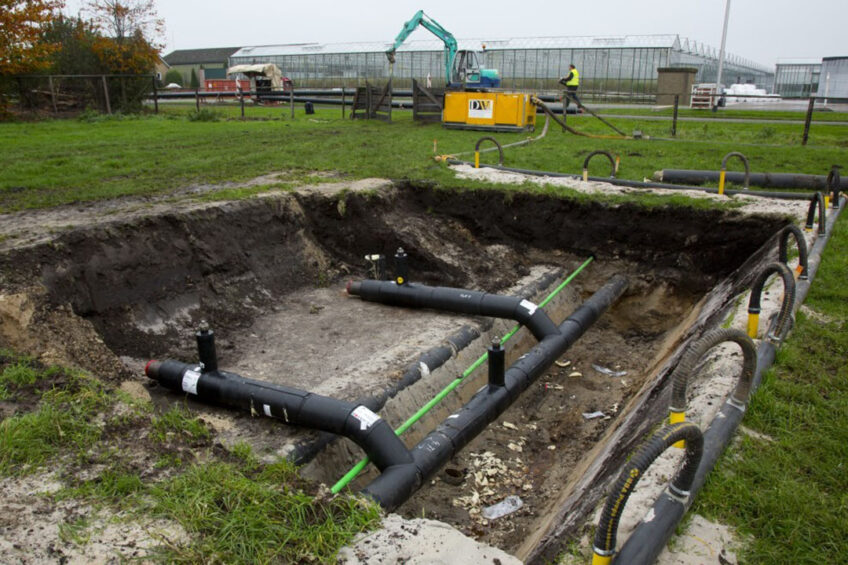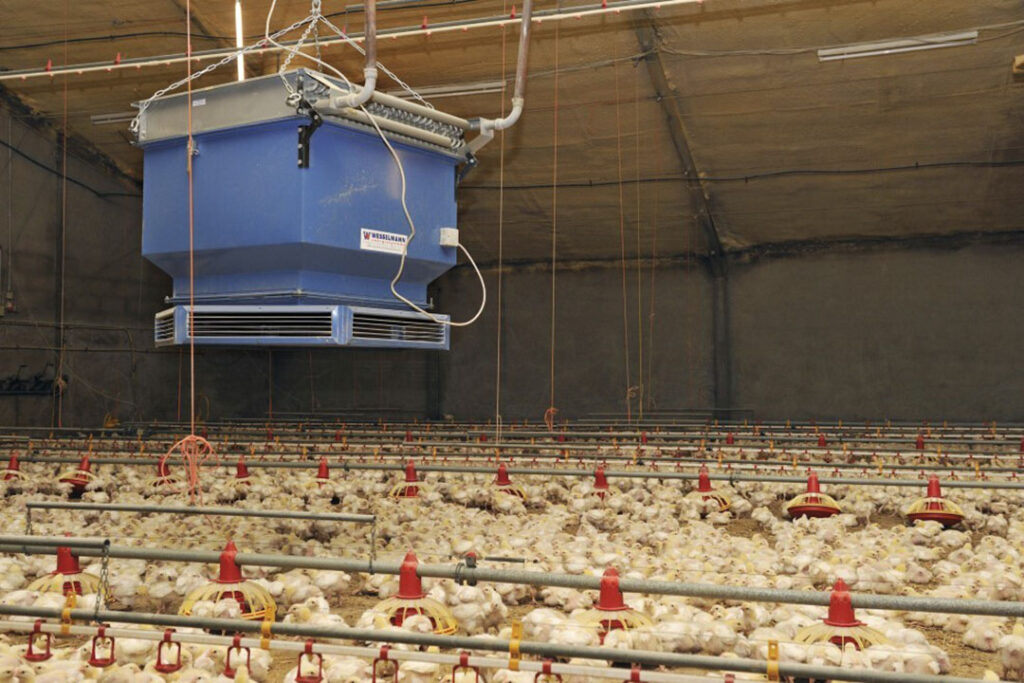Water as a renewable and sustainable energy source

In the quest for sustainable broiler production and to lower its carbon footprint, novel energy sources are being considered. Wind and solar are already in play but less is known about water as a renewable and sustainable energy source. However, its potential – in combination with heat pump technology – is huge.
Broiler production is based on raising fast-growing chickens for the mass production of meat with high efficiency and at low cost. The production performance of broilers is impacted by factors such as ambient temperature and humidity, as well as heating and cooling systems, to name but a few. Meanwhile, cold stress also significantly influences broilers’ health and welfare.
The broiler industry therefore requires substantial amounts of fossil fuels to provide the necessary energy and desired internal temperature in broiler houses. The increased energy required by intensive broiler production systems results in high running costs and greater greenhouse gas emissions. Thus, renewable, sustainable and climate-friendly energy sources are needed in broiler production systems to save energy, reduce greenhouse gas emissions and, to some extent, provide producers with potential economic benefits.
Currently, wind and solar energy sources are 2 sustainable and renewable energy sources, the popularity of which is growing for use in broiler production systems. However, these energy sources cannot produce much electricity and heat energy without wind, or when it is dark or cloudy. Water, on the other hand, is used as a climate-friendly, clean, cost-effective energy source to generate electricity and regulate temperature in broiler houses, even in remote areas.
Influence of broiler industry on global warming
Greenhouse gas emissions (e.g., carbon dioxide and ammonia) are among the most important contributors to global warming. The increasing atmospheric concentration of greenhouse gas has a negative impact on plants, animals, human activity, ecosystems and the economy around the world. Intensive broiler production consumes large quantities of fuel worldwide to produce energy and keep the internal temperature, relative humidity, chemical environment, ventilation and lighting inside chicken houses within a reasonable range. Broiler and livestock production is responsible for around 20-25% of global greenhouse gas emissions.
Water as an energy source
A secure, reliable and affordable electricity supply is critical to the industrial and economic development of every country. The use of renewable energy sources and efficient energy technology is therefore increasing worldwide. Using the force of flowing water based on gravity is the most common use of sustainable and renewable energy. The energy produced by water is considered a renewable resource because it uses the earth’s water cycle and gravitational pull to generate electricity. Flowing water is therefore not only climate-friendly, clean, and cost-effective, but also easy-to-maintain, sustainable and a renewable energy source to generate electricity.
Water source heat pump technology
Water source heat pump technology is commonly used in broiler houses to regulate the environmental temperature. This technology provides an effective approach to supplying water and space heating, and can be adapted to a range of water bodies, including groundwater, lakes and rivers.
Water source heat pump technology draws heat from a water source and increases its temperature to a suitable level for water and space heating. Although the initial investment costs are high, heat pumps have a long working life and a low carbon footprint which makes them an optimum solution for heating sheds in the heating season, along with a rapid return on investment.
Water source heat pumps can save up to 33% of energy costs, contributing to a 22% return on initial investment with a payback period of 5 years. Running costs are generally 25-50% cheaper than conventional heat pumps and carbon dioxide emissions are reduced by about 75%.

How it works
Water source heat pumps have long water pipes buried in the ground in horizontal or vertical configurations to transfer heat up or down a temperature gradient. Open-loop systems circulate water from a water source. A water source heat pump can raise temperatures from about 12°C up to 60°C. In addition, this technology can reverse the process at any time to cool sheds, or even provide heating and cooling simultaneously.
Global status of water source heat pump
Sweden, the US, Germany, Switzerland, Canada and Austria are the leading countries utilising water source heat pumps. The technology is gaining popularity in France, the Netherlands, China, Japan, Russia, the UK, Norway, Denmark, Ireland, Australia, Poland, Romania, Turkey, Korea, Italy, Argentina, Chile, Iran and Norway.
The adoption of the technology has been slower than for some other renewable and conventional energy technologies due to such factors as non-standard system design, significant capital cost compared to other systems, lack of sufficient installation expertise and limitations on use due to government policies.
To conclude
The development and application of renewable and sustainable energy technologies is essential to improve the production performance, health and welfare of broilers. Water is used throughout the world as a sustainable, renewable and climate-friendly energy source for electricity production, space heating and cooling, as well as for industrial purposes and agricultural production.
Water source heat pump technology has environmental and economic benefits with the potential to provide heating and cooling of broiler houses simultaneously. It can improve air quality inside the broiler house, enhance the broiler housing environment, reduce greenhouse gas emissions and, as a result, benefit the production performance of broilers by improving their health and welfare at a lower energy cost compared to conventional heating systems used in broiler houses.
However, further studies are needed to resolve the issues and challenges that are limiting the growth of this technology and to increase global acceptance of the water source heat pump. Further research should also concentrate on the development of hybrid technologies to improve the performance of the system so that it can better serve the poultry industry.












